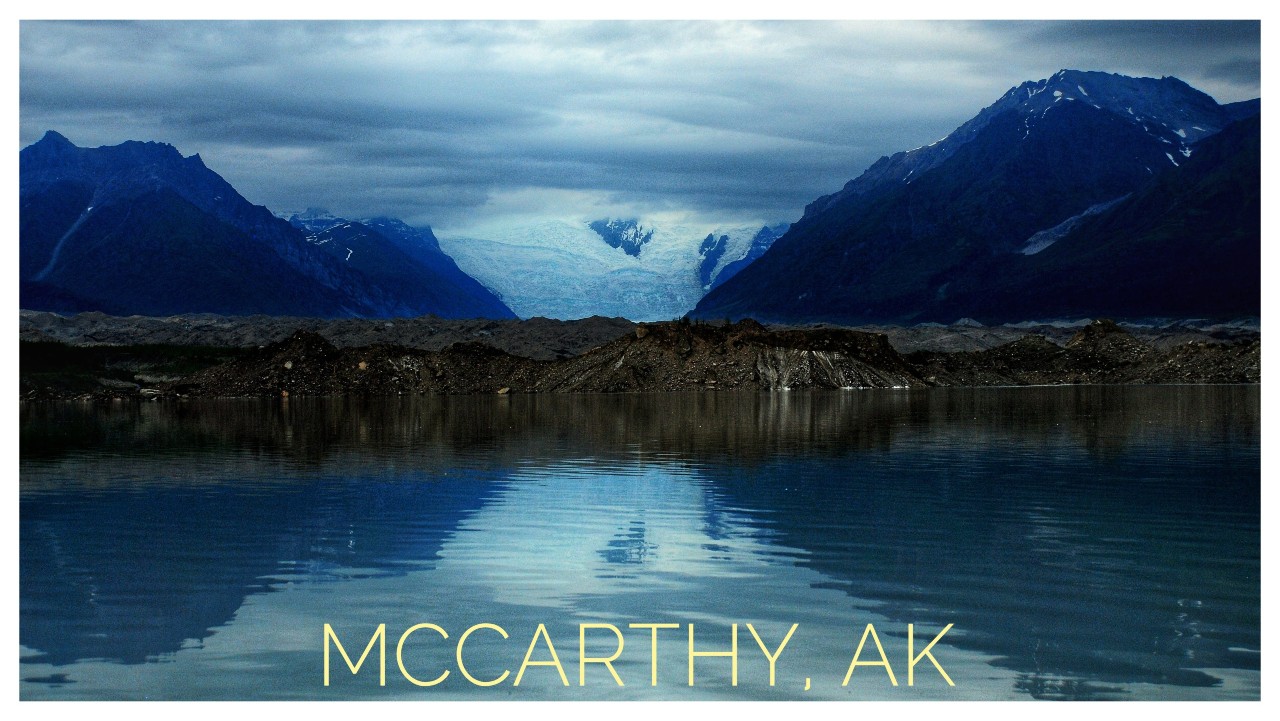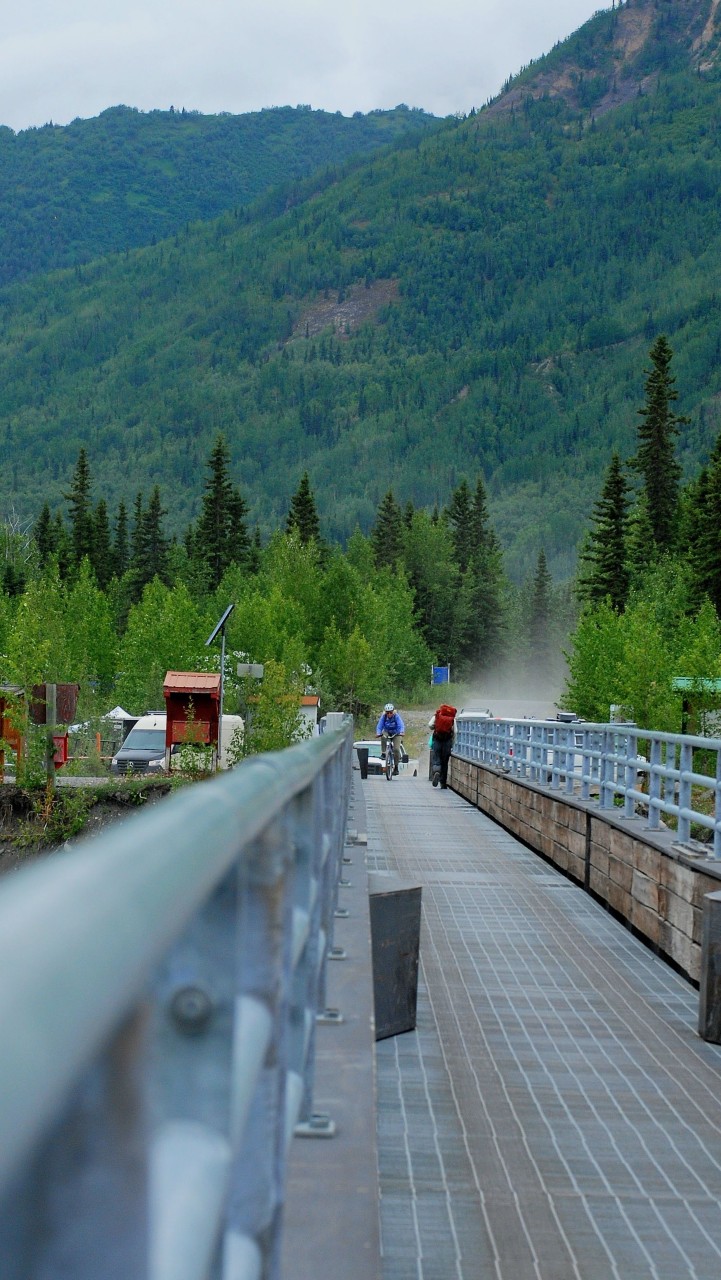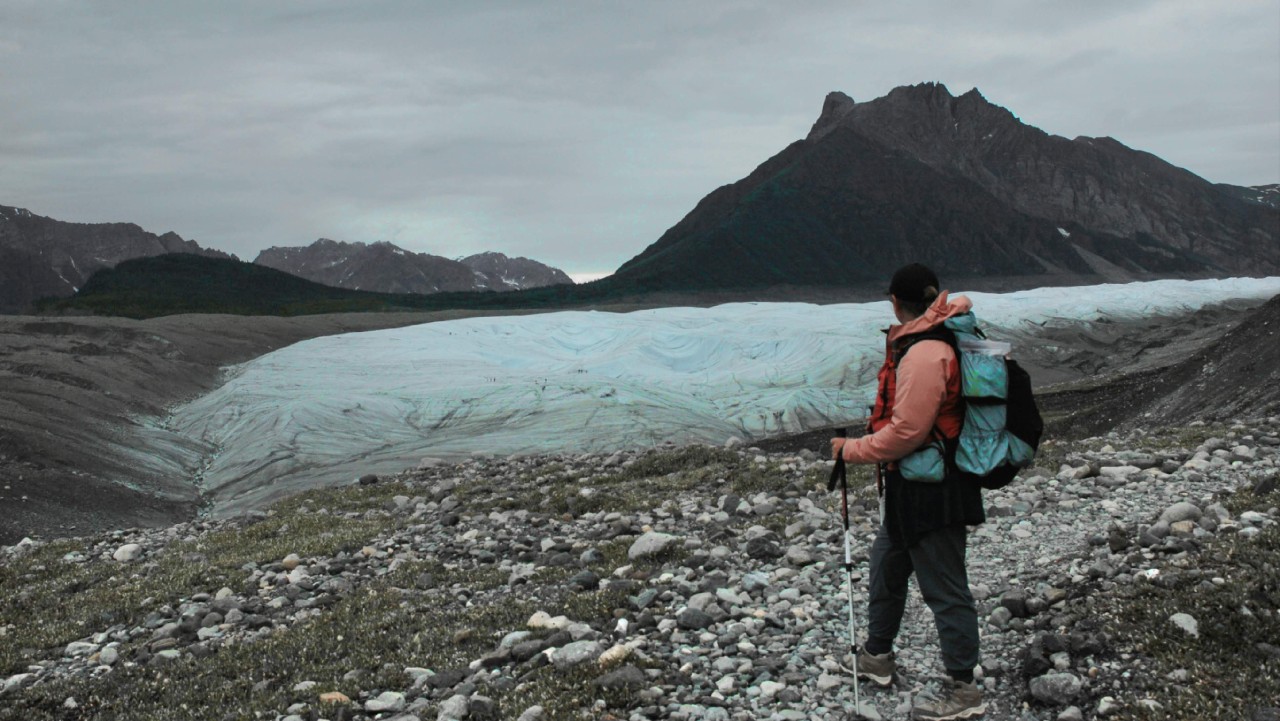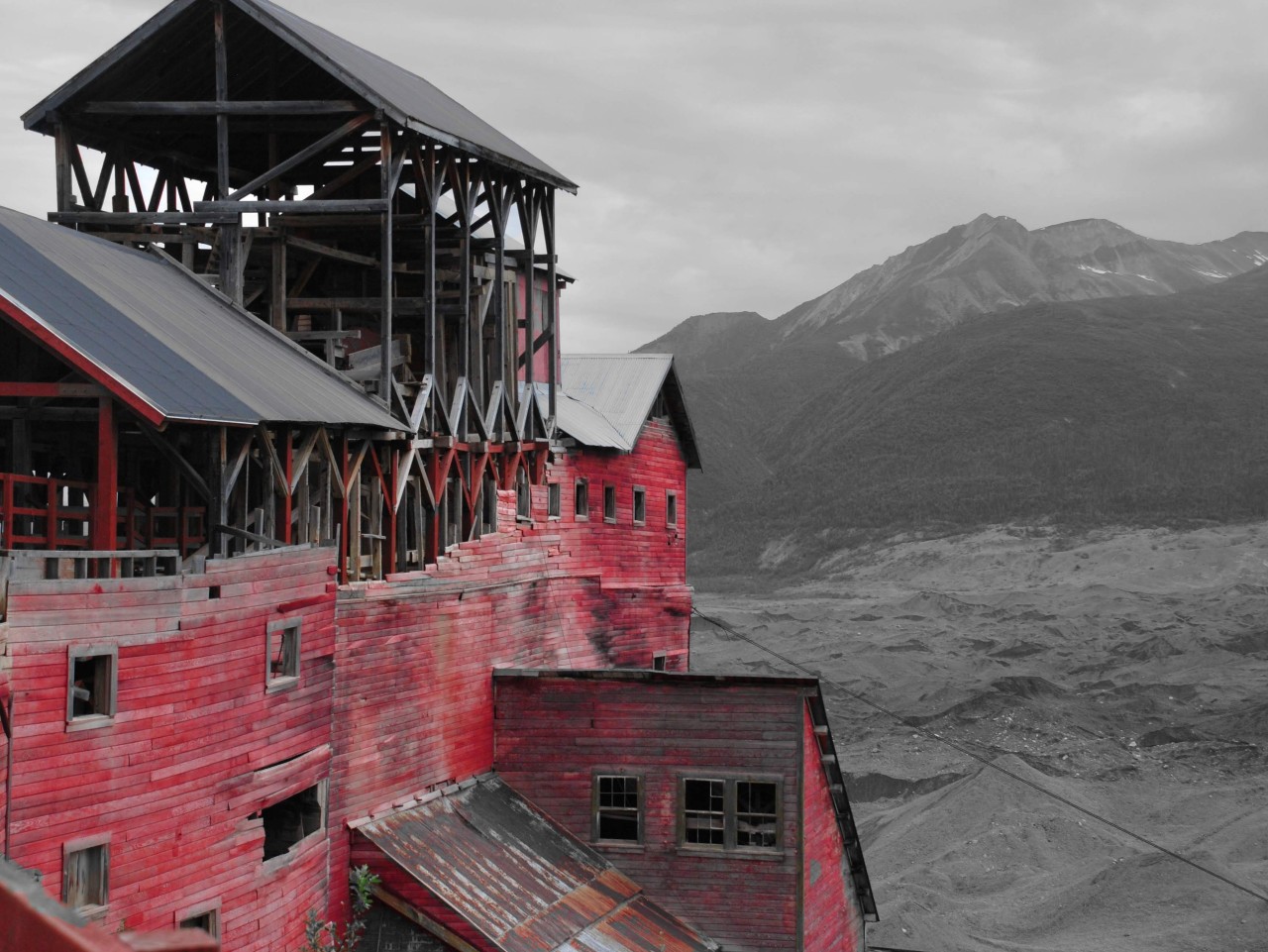Bumpy Roads
An Alaskan Vanventure
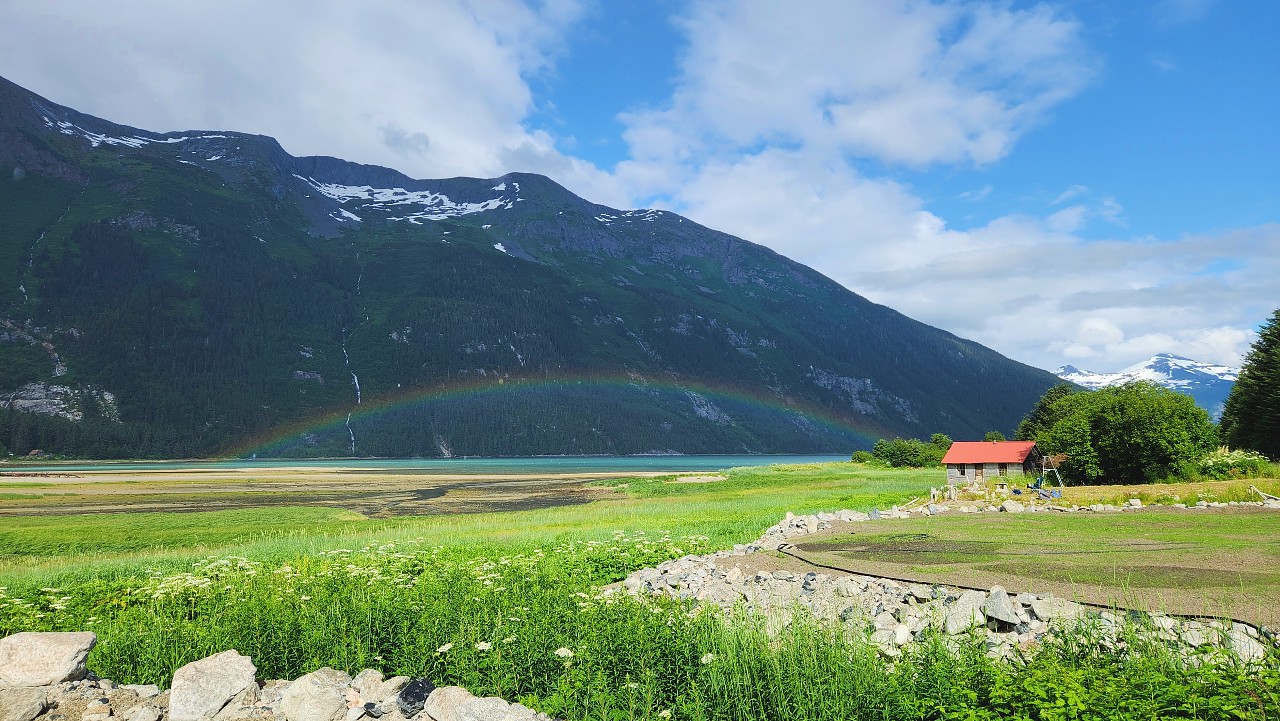
When cruise ships aren’t stationed offshore, Haines is a quaint little town filled with artists and fishermen—a peaceful haven at the edge of the wild. Depending on which way you are going, Haines is either the first or last touch of civilization before driving north or sailing south. Alaska-bound travelers take the road that deceptively begins by leaving Alaska, winding through the Canadian Yukon before re-entering the Alaskan backcountry. This is the Alaska-Canada (Al-Can) highway. With its relentless frost heaves, vast distances, and remote stretches, the Al-Can is the widow maker of highways.
For the unacquainted, frost heaves are, in simplest terms, ramps on the highway created by the extreme environmental conditions of the northern territory. Unfortunately, the only warnings that you are approaching one are the deep scars and burnt rubber stains beyond the heave, left by vehicles far less equipped to handle being launched into the air at roughly 60 miles per hour without warning. The Al-Can highway is the road equivalent of a predator stalking its prey. The road is lined with familiar signs teasing expressway speeds across expanses of a calm flat highway which lure bone-weary and witless motorists into a false sense of security. With the hypnotic thump-thump rhythm of the road and the breathtaking scenery scrolling by, the prey lowers their defenses. Then suddenly, without warning… Whoosh-BLAM! – the vehicle blasts off just as gravity takes hold! Constitutions of both the passenger and vehicle are tested while only the sturdiest of both survive.
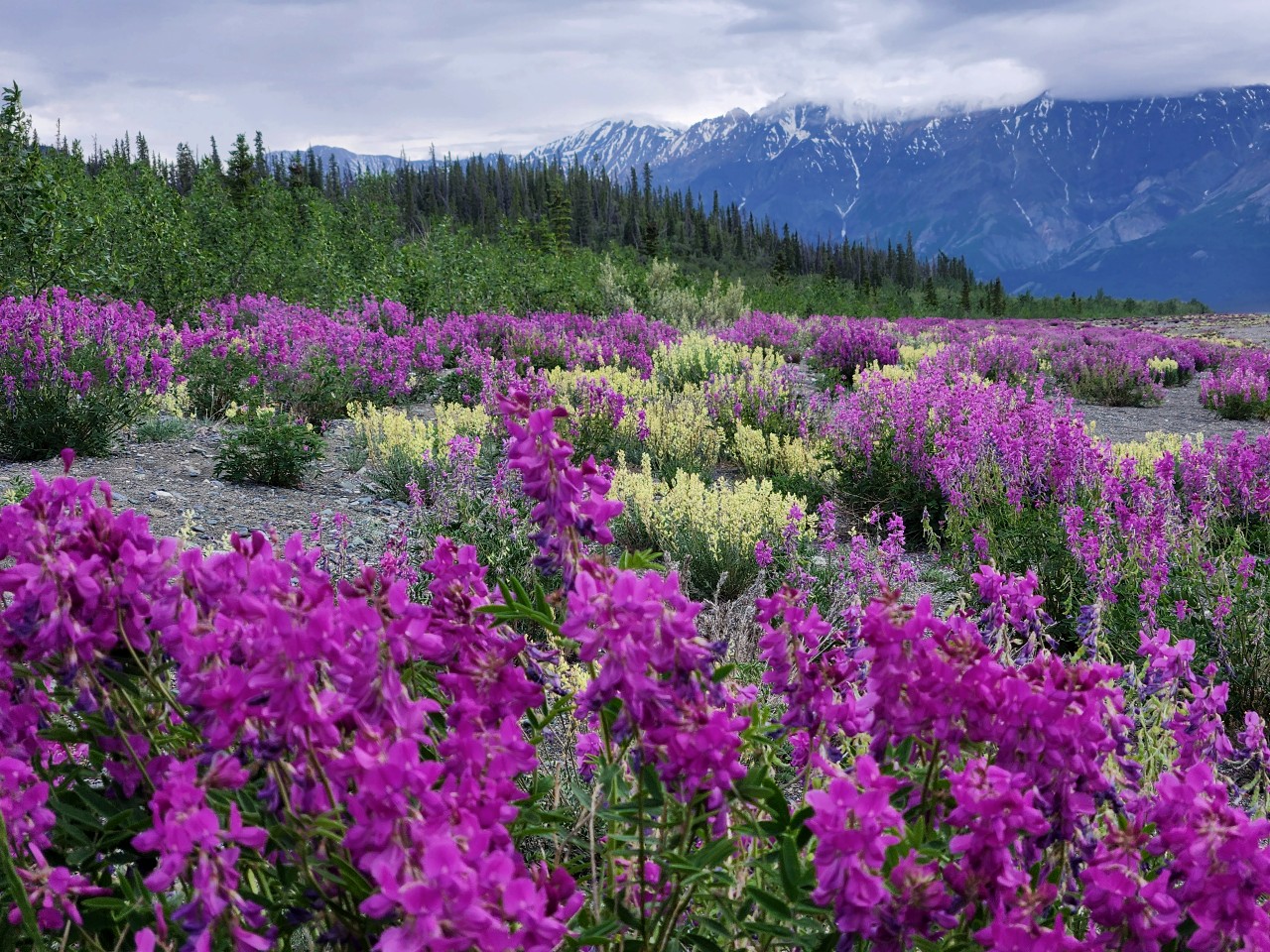
Not entirely unrelated, This One grips the steering wheel with white knuckles while That One holds her breath as they traverse the Yukon wondering what will fail first the vehicle or their resolve. They’re navigating the Al-Can Highway, feeling like a ship caught in a storm. Each jolt and dip tests their courage. Every thud and creak challenges the vehicle’s durability. Yet, amidst the nerve-wracking bumps and drops, they steal moments to marvel at the unfolding landscape. Little did they know, the bike rack on the back of Heyvan, carrying two of their most treasured possessions, was silently taking the brunt of the journey’s toll.
“I’m no expert, but it looks like one good-sized speed bump could finish this off,” said This One, eyeing the warped metal frame that, with some imagination, still resembled a bike rack.
“Think it can survive another 500 miles?” asked That One, already rummaging for rope and duct tape, not waiting for the answer.
Every nomad quickly learns that resilience is fundamental to traveling. When venturing into remote and unfamiliar territories, it’s best to keep calm and, as a certain blue tang fish advises, ‘just keep swimming.’ With little other choice, they did what they could to delay the inevitable. They secured the rack with rope, adjusted to a more cautious pace, and whispered a few hopeful intentions to the universe before setting off on the even bumpier road ahead. Unfortunately, though the universe had spoken to them, they failed to heed the warning —if they had, they might have reconsidered their next destination.
After departing their camp the intrepid travelers winded their way over a few more frost heaves albeit at a bit slower pace and arrived at a crossroads. To the left, is the remote town of McCarthy, while the right leads to the modern city of Anchorage. Emboldened by the success of their patch job on the bike rack, they bravely made the left-hand turn towards adventure.
Nothing in Alaska is easily earned, and the journey to McCarthy is no exception. To reach the remote outpost one must survive three tests of courage; The squeeze, the washboard, and the crossing. Each challenge feels like a rite of passage, daring you to continue. If the Al-Can Highway didn’t break you, the road to McCarthy was determined to finish the job.
The van rolled through Chitina’s main street, passing the single-pump gas station and general store, until it reached the south side of town. Here is where the pavement ends, a dirt road begins—but not before confronting the Squeeze. This narrow one-way passage, barely a car’s width wide, was carved through the rock for reasons long forgotten. Our heroes paused to assess their gear and prepare the vehicle for the off-road journey ahead. They crept through the crack when it was their turn, crossing to the other side where McCarthy Road awaited them. From this point on, they were on their own; no assistance would be available past the sentries guarding this path.
No longer victim to frost heaves, they confidently drove alongside magnificent braided rivers, distant peaks, and untamed natural surroundings. They cruised along the relatively flat gravel road. Compared to the Al-Can this was easy. However, the second challenge on the journey to McCarthy was a gradual transition, and before long the washboard started.
Washboarding is a phenomenon that occurs on dirt roads when drivers travel too fast. Their speed causes the tires to skip along the gravel like a stone over calm water. Every time the tire taps the ground a ripple is created. Unlike water which will smooth out over time, the dirt builds up creating a washboard effect in the most well-traveled areas. The irony of this science is that drivers often combat this vibration by traveling faster to even out the bumpy feeling thus compounding the problem. More washboarding, Faster driving. Even more washboarding until you have an 80-mile stretch of compacted earth littered with potholes and washboard, making for a rather rumbly ride.
This One patiently and skillfully navigated the rough terrain while stealing glances at the gorges, and waterways. That One scanned the landscape in the copilot seat as they went. It took them nearly 3 long and dusty hours to make it 60 miles deep into the backcountry. They arrived at the end of the road where the final challenge remained. The only way into town is via a footbridge and a short stroll up an old mining road. The two travelers located a cozy spot along the river amongst the other brave souls venturing into this wild Alaskan destination and set out on foot to finally see McCarthy.
The town did not disappoint. At the mouth of Wrangel St. Elias National Park. McCarthy is nothing more than the essentials. Home to a small population of hardy homesteading souls, the main street consists of a restaurant, a bar, a dispensary, and a general store. McCarthy is used as a jump point to explore the National Park with its historic mining town of Kennicott, Root Glacier, and hike mountains that inspire the artists and musicians that call this town home.
Once the adventurer has had their fill of potato-themed cuisine, overpriced alcohol, and traded stories with fellow travelers, it is time to repeat the whole process in reverse and return to the world of paved roads, cell service, and crowds (relatively speaking). After several days of exploration, they left the footbridge behind, drove the washboard road, squeezed by the granite-guarded pass, and rolled back onto solid ground for a mile then pulled over at a burger joint to celebrate.
“We made it!” This One announced as she held her celebratory can of coke aloft.
“Cheers!” That One toasted in return.
With full stomachs, they climbed back into the van, started it up, and prepared to roll on. But nothing happened. The gas pedal was unresponsive, and the check engine light glowed ominously. They managed to hobble into a safe parking area to assess the situation. The dilapidated bike rack was now the least of their concerns. Heyvan was in trouble, and the nearest mechanic capable of handling the massive vehicle was in Anchorage—400 miles away. At their current max speed of 10 miles per hour, they weren’t going to make it. They needed a rescue.
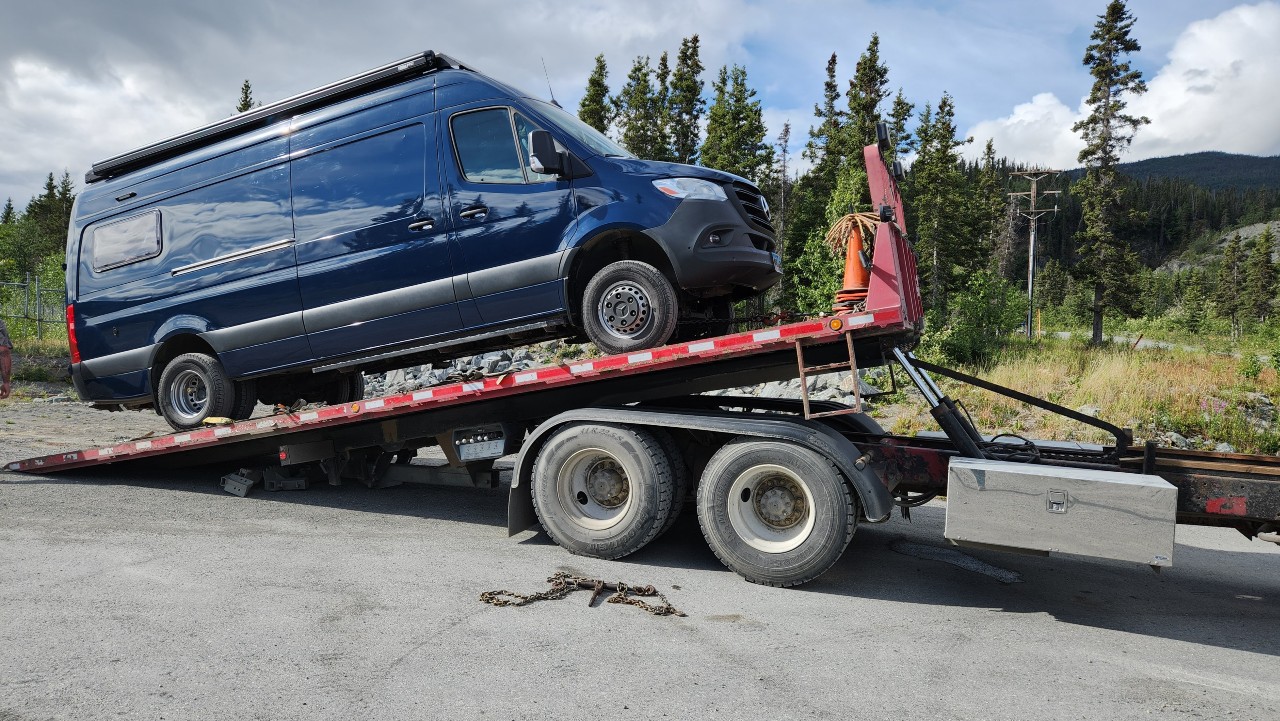
Adventure often comes at a price, and the Alaskan backcountry makes sure you earn every mile. Two days later their rescue arrived in the form of a tow truck. Once Heyvan was mounted on the back This One and That One packed into the cab of the tow truck along with their new best rescuer. As they rode the four-hour trip to Anchorage, our heroes sleepily watched the mountains, glaciers, and trees pass by making the best of their situation. Though this wasn’t how they envisioned reaching Anchorage, deep down they knew it was the path they were meant to take. The rough road ahead was just another part of the vanventure.
